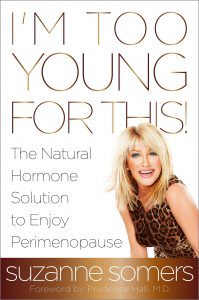H.E.A.R.T. Physiologic Balance and Aging
Through Hormone Endocrine Anti-Aging Replacement Therapy
Learn how integrating cutting edge therapies with your current medical program can make you LOOK, ACT, FEEL and BE 10 – 15 YEARS YOUNGER.
I have seen a pattern in older people over my many years of practice – bent over, frail, forgetful, and suffering from age-related illness that for many seems an unavoidable fate. This type of thinking is illogical and unacceptable to me and I would hope and encourage for you as well. Is survival truly enough? Is adding years to your life more important than adding life to your years? For me, it is the quality of life I lead that impacts me more than the longevity I survive and so I strive break my family tradition of early demise and death.
MISCONCEPTIONS AND A RAY OF HOPE:
I believe (along with others) that the saddest and most deceptive bit of information taught to us starting in our thirties, is that arthritis, cognitive
dysfunction, memory decline, physical pains, emotional swings, energy and muscle losses are “NORMAL”. Are we supposed to fall prey to Osteoporosis, Heart Disease, Alzheimer’s and Cancer? And, are we to be comfortable with and accepting of the fact that no one lives forever and more importantly, that no one lives healthy and happily ever after? As a doctor and a patient I find this kind of apathy frustrating yet I am excited to say that there is a rainbow amongst these clouds of preconceived doom and your pot of gold (your renewed health and youth) awaits you.
Aging Begins in our Minds:
Our beliefs about the onset of old age have evolved as life expectancy has lengthened. Several studies have shown that the body is designed to live well over a century yet so few of us find it “natural” or even possible to live beyond eighty or ninety. Everyday we hear of people living beyond a century, in fact, in recent national news, a 106-year-old female was advertising for a suitable male partner to court her in her first marriage!
Stats: In 1950 there were 2,500 centenarians (people over the age of 100). The extended prediction is that by year 2050 there will be an estimated 33 million
in the 65 to 74-year-old age group, 31 million in the 75-84-year-old age group, 16 million in the 85 to 99-year-old age group, and 2.5 million in the 100 plus age group.
We Age as a Result of a Decline in Hormone Levels Not Visa-Versa:
Although it is true that with the development of technology our high stress, toxin-filled environment and diet prematurely age us, I think, no believe, no scratch that, I know our individual processes of aging carries a greater element of choice than we are willing to assume and take responsibility for. There are many powerful ways to slow down the aging process such as: lifestyle changes to include enzyme-rich food, exercise, clean air, meditation, stress management, loving relationships, sleep,creativity and H.E.A.R.T. Hormones are the keys to our health. It is important to note for the thorough understanding of H.E.A.R.T. (Hormone-Endocrine-Anit Again Replacement Therapy), it is the balance as well as the absolute levels of these hormones that determines our fate. We now have the capability and technology to live a healthier, younger and more fruitful life than we are currently experiencing regardless of our age or health problems. I encourage you to take the first step and take charge of your health and begin to live the way that you were programmed to. That is, living a healthy life free of illness and disease until your ninth or tenth decade and maybe even longer. Than and only then, smoothly, respectably and painlessly fall into the hands of fate before you reach eternity.
Hormones Aren’t Just for Women:
It is not only women who go through hormonal shifts i.e. menopause. Men with the proverbial “midlife crisis” actually are going through the female equivalent of menopause known as ANDROPAUSE (also sometimes referred to as MAN-O –PAUSE). By correcting these imbalances/deficiencies with BIO-IDENTICAL HORMONES one reaps great benefits in terms of quality of life.
